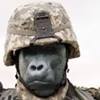

| Visitors Now: | |
| Total Visits: | |
| Total Stories: |

| Story Views | |
| Now: | |
| Last Hour: | |
| Last 24 Hours: | |
| Total: | |
Boeing 787 Dreamliner taking to the skies
Anything and everything anytime
The Boeing 787 Dreamliner is a long-range, mid-size wide-body, twin-engine jet airliner developed by Boeing Commercial Airplanes. Its variants seat 210 to 290 passengers. Boeing states that it is the company’s most fuel-efficient airliner and the world’s first major airliner to use composite materials for most of its construction. According to Boeing, the 787 consumes 20% less fuel than the similarly-sized 767. Its distinguishing features include a four-panel windshield, noise-reducing chevrons on its engine nacelles, and a smoother nose contour. The 787 shares a common type rating with the larger 777 twinjet, allowing qualified pilots to operate both models, due to related design features.
The 787′s design features lighter-weight construction. The aircraft is 80% composite by volume. Its materials, listed by weight, are 50% composite, 20% aluminum, 15% titanium, 10% steel, and 5% other. Aluminum is used on wing and tail leading edges, titanium used mainly on engines and fasteners, with steel used in various places.
External features include raked wingtips and engine nacelles with noise-reducing serrated edges. The longest-range 787 variant can fly 8,000 to 8,500 nautical miles (15,000 to 15,700 km), enough to cover the Los Angeles to Bangkok or New York City to Hong Kong routes. It has a cruising airspeed of Mach 0.85 (561 mph, 903 km/h at typical cruise altitudes).
The 787-8 is the base model of the 787 family, with a length of 186 feet (57 m) and a wingspan of 197 feet (60 m) and a range of 7,650 to 8,200 nautical miles (14,200 to 15,200 km), depending on seating configuration. The 787-8 seats 210 passengers in a three-class configuration. The variant was the first of the 787 line to enter service, entering service in 2011. Boeing is targeting the 787-8 to replace the 767-200ER and 767-300ER, as well as expand into new non-stop markets where larger planes would not be economically viable. Two thirds of 787 orders are for the 787-8.
The 787-9 will be the first variant of the 787 with a “stretched” or lengthened fuselage, seating 250–290 in three classes with a range of 8,000 to 8,500 nautical miles (14,800 to 15,750 km). This variant differs from the 787-8 in several ways, including structural strengthening, a lengthened fuselage, a higher fuel capacity, a higher maximum take-off weight (MTOW), but with the same wingspan as the 787-8. The targeted entry into service (EIS) date, was originally planned for 2010, but by October 2011 deliveries were scheduled to begin in early 2014. Boeing is targeting the 787-9 to compete with both passenger variants of the Airbus A330 and to replace their own 767-400ER. Like the 787-8, it will also open up new non-stop routes, flying more cargo and fewer passengers more efficiently than the 777-200ER or A340-300/500. The firm configuration was finalized on July 1, 2010.
Boeing Winnipeg is highly involved in the production of the 787.
Boeing Winnipeg is a Tier I partner to the 787 Dreamliner program and is responsible for the Wing-to-Body Fairing, Main Landing Gear Doors and the Vertical Fin Fairing for the lifecycle of the program. Boeing Winnipeg also supplies the Engine Strut Forward and Aft Pylons for the 787 as a Tier II Partner.
Orders
| 2004 | 2005 | 2006 | 2007 | 2008 | 2009 | 2010 | 2011 | 2012 | Total | |
| Net orders | 56 | 235 | 157 | 369 | 93 | -59 | -4 | 13 | -16 | 844 |
| Deliveries | – | – | – | – | – | – | – | 3 | 30 | 33 |
2012-11-24 19:26:35
Source: http://markosun.wordpress.com/2012/11/24/boeing-787-dreamliner-taking-to-the-skies/
Source:









